|
WALK INTO THE SEA
Return To Scooby Doo Island
The ever-alert viewers of WoS won't, of course, need to be reminded of this semi-intrepid reporter's previous attempt to document the forbidden mysteries of Scooby Doo Island. Scuppered by a witless failure to grasp the basic physics of tides, your correspondent stood helplessly on the shore and watched the sea stubbornly refuse to retreat to the safe distance that would allow access to the end of the derelict Birnbeck Pier at Weston-super-Mare, and reveal for posterity the decades-old treasures concealed there. But WoS isn't so easily defeated, and even as you were reading that piece, plans were in motion to conquer the reclusive, decaying outpost once more, before another of Britain's lost and abandoned places was finally swept away out of history for ever. Here's what became of those plans.

This inviting-looking path is a red herring leading nowhere.
Some slightly more diligent research this time had revealed that Weston would reach two of its annual lowest tides on Friday and Saturday the 11th and 12th of August. Surrounded by days of much higher seas, these two isolated dates would see the ocean retreat far enough that the elevated pebble ridge (which was originally constructed to enable the sectioning-off of a boating area) connecting Birnbeck Island to the shore would become accessible, enabling the brave and sure of foot to walk across the sea bed and simply stroll up the slipway to the pier end. So on the Friday I packed my trusty digital camera, a mobile phone for emergencies and a warm jumper for the vicious winds that scythe along the Bristol Channel even at the height of a sun-baked summer, and set off for the low tide.
Arriving half an hour or so before what the website I'd checked had confidently proclaimed as the appointed time, I was horrified to discover the muddy brown waters resolutely still blocking the way to my goal, just like the last time, and dejection seized at my heart. An hour and a half of stomping in angry dismay around the arcades and rock shops later, I returned to the deserted north promenade more because I'd parked my car there than in any expectation, and was pleasantly surprised when the scene below met my eyes. Game on!
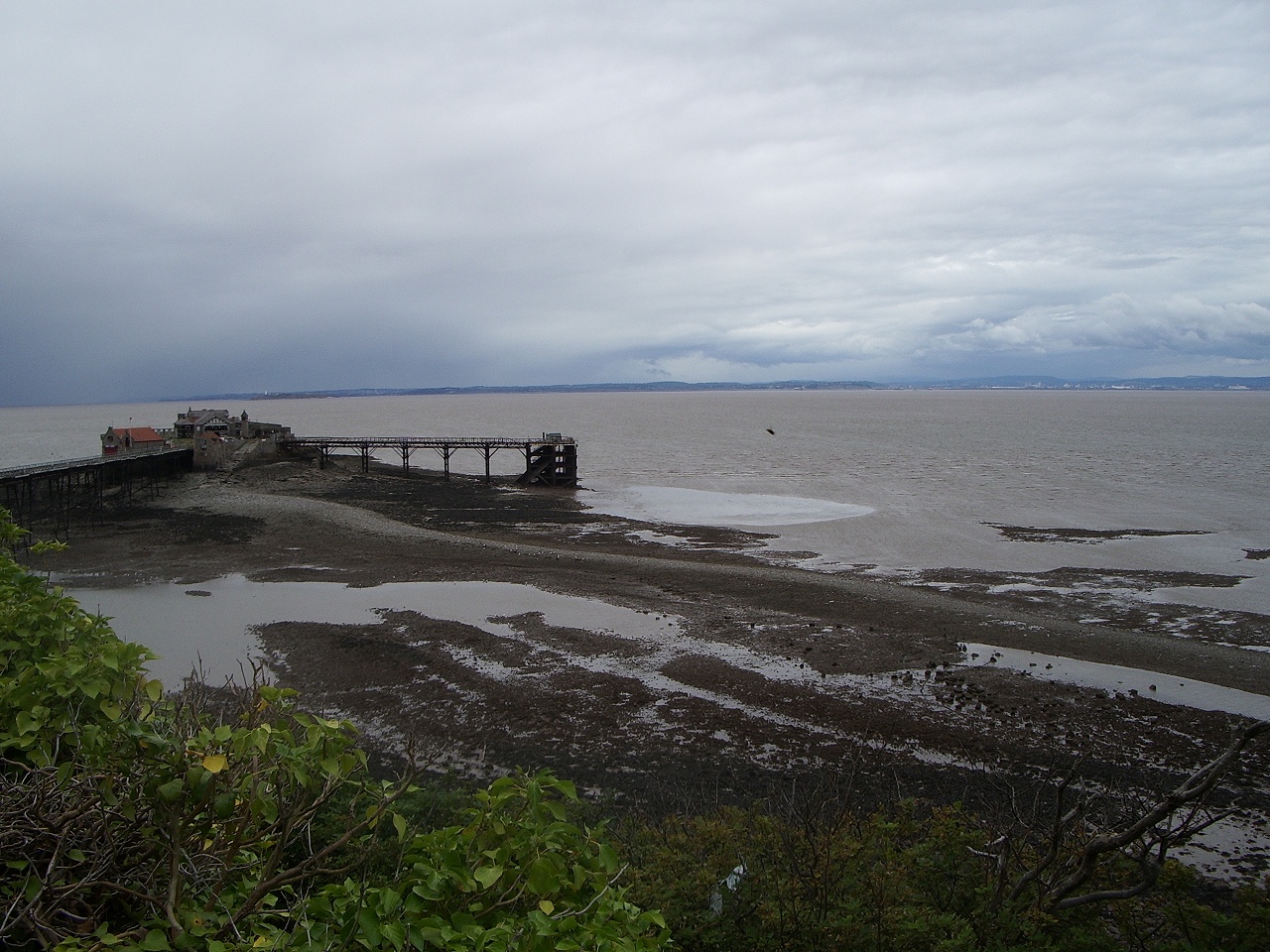
Looks practically like a Roman road, doesn't it?
Even if you're fortunate enough to encounter the rare view depicted above, though, you've still got a lot of work to do. The sea at Weston-super-Mare recedes at an angle, with the waterline running roughly parallel to the ridge and moving from the bottom-left corner of the picture towards the top-right. However, the topography of the seabed means that it's essentially impossible to approach the pier on foot from the south side (the left of the shot), and the north side is protected by sheer cliffs maybe 80 feet high. There's just one point where you can find a navigable route from the road down to the shore, leading across a crash-barrier, through a gap in the trees and over some bramble-strewn undergrowth, then descending a precipitous slope onto a wide ledge from where you can walk along a few dozen yards and relatively easily slide the last 20 feet down a smooth 45-degree rockface.
After a few wrong turns, I found the route and made my way down. Once at the foot of the cliffs, there are three distinct parts to the crossing. First, you have to clamber across a little mini-cove full of large boulders. Then, there's a substantial and treacherous bank of jagged, seaweed-covered rock, coated in slimy mud. This is the worst part, since the thick, slippery weed obscures what's underneath, and you have to be very careful not to put your weight on what looks like secure footing, but turns out to be a lethal ankle trap of loose stones balanced shakily on a knife-edge outcrop. Once past that, there's a short mudbank and then you're onto the main ridge itself, a relatively straightforward path to the island made up of fist-to-head-sized pebbles and various bits of weird detritus. Job all but done, right?

Halfway there. (This is a zoom shot. It's further away than it looks.)
It is until you look up. The winding route you have to take to get from the foot of the cliffs to the pier slipway covers a total distance of maybe 600 yards or so. Which isn't very much on dry land, but it's a hell of a lot longer when you're picking your way slowly and carefully across what you're only too aware is the sea bed for 361 days of the year, there's a bone-slicing gale howling down the shoreline, and you know that your information about the tide times is wrong, but you don't know by how much. Looking ahead, you see the picture above - a forbidding, desolate island, rusting and rickety and razor-wired, promising only danger and isolation. Looking to the side you see the cold and filthy sea, stretching infinitely to the horizon but not quite far away enough for comfort, and seemingly moving incessantly towards you (as, of course, the sea always does). And looking back, you see this:
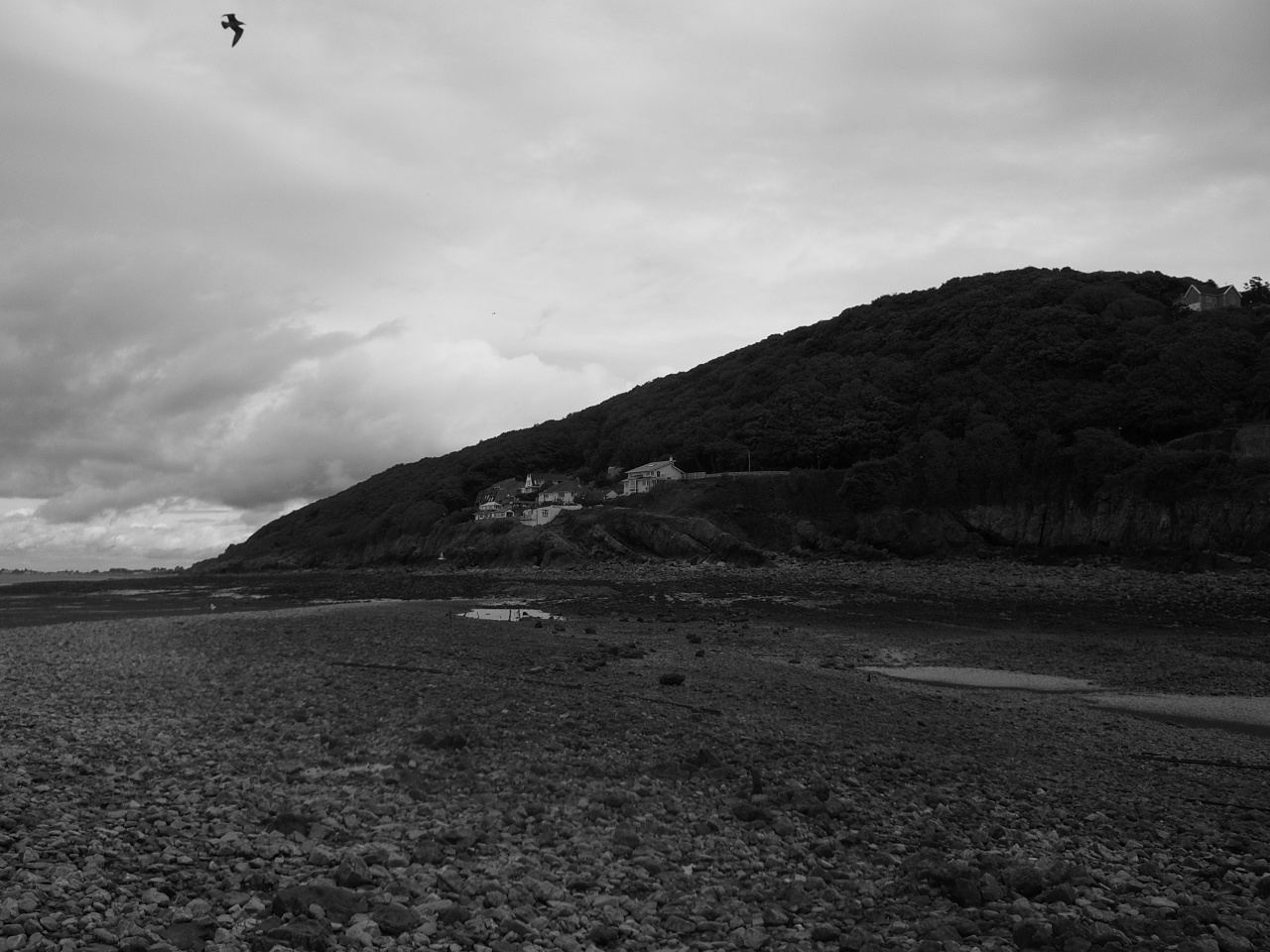
Jesus Christ, where did the sun go?
Suddenly, you feel very, very exposed, in a way you'd never imagined when surveying the scene from the high vantage point of the promenade. The safety of dry land is disappearing into the gloomy distance. Your goal is still a good few minutes away, and a quick burst of mental arithmetic tells you that if you carry on with your mission, you won't be back on the shore road out of the ocean's icy reach for at least another 40 minutes. It's a summer day, but it's overcast and grey and you're freezing in the wind. It dawns on you that if you were to put a foot wrong and go over on your ankle, your precious mobile phone isn't actually going to be much use to you. After all, it's hard enough to cross this ground on your own - what chance do you have of a couple of ambulance guys with a stretcher making it down the cliff, past the boulders, across the seaweed, over to you and back again like some kind of hellish black satire of It's A Knockout before the ocean comes to reclaim its territory?
You look ahead, then back again, and you could swear the sea's moved a little closer in behind you. Has the furthest, lowest point of the tide come while you were twatting around getting an ice-cream and playing the crane-grabber machines, and is it already on the way back in? A quiet, paralysing panic starts to rise along with the tightening cold, growing louder with each step you take. Soon it's a deafening voice in your head screaming at you to stop being such a total idiot on a childish, reckless, silly adventure and turn back right now.
And after a long, long minute of
agonised heart-searching, mine got the better of me.

This shot of the jetty tower was taken, also at 3x optical zoom, from the turnback point.
I sat in my car overlooking the pier about 20 minutes later, my ears burning from the cold and my soul burning with self-loathing for my cowardice. The sea taunted me cruelly, still not having returned to take back the pebble ridge after a further 45 minutes as I sat there dumbly watching, consumed by disgust but morbidly unable to leave the scene of my abject failure. Eventually I dragged myself away as the water finally began to encroach on the ridge, more than an hour after I'd bottled it and wobbled my way back to safety.
I had several other things to do in Weston that day, but even collecting two beautiful new rats to replace my beloved and sadly-departed Missy did little to raise my spirits, and my heart wasn't in the evening's poker game as I crashed out early without adding any points to my league tally. I got stuck behind a Sainsbury's lorry most of the way home, rendering the journey through what's usually beautiful countryside frustrating and ugly, and to spare tiny rodent ears I couldn't even blast some uplifting pop music out of the car stereo. I got in, cleaned out the rat house, and spent the rest of the night in a black pit of misery.

Even the promenade was a source of mockery.
I went back on Saturday, obviously. You didn't think WoS just gave up that easily, did you?
Rather than brave the summer-weekend traffic on the narrow country roads I took the 13:01 train, which is a swift 36-minute direct connection on a Saturday, rather than the usual gruelling epic trek of changes at Temple Meads and stops at piddly little stations in obscure suburbs and outreaches of Bristol every 200 yards along the way. On the Friday evening I'd managed to find the accurate tide times on a signboard on the beachfront, so I walked the mile or so from the train station to Birnbeck, scheduled to arrive a good 90 minutes before the low tide at 3.54pm. My timing was bang on - the water had only just uncovered the causeway, giving me the maximum possible window in which to get across, take pictures and get back safely, hopefully before the ocean was even starting its return journey to the shore. I wasted no time scrabbling down the cliff and starting out once more for the island.
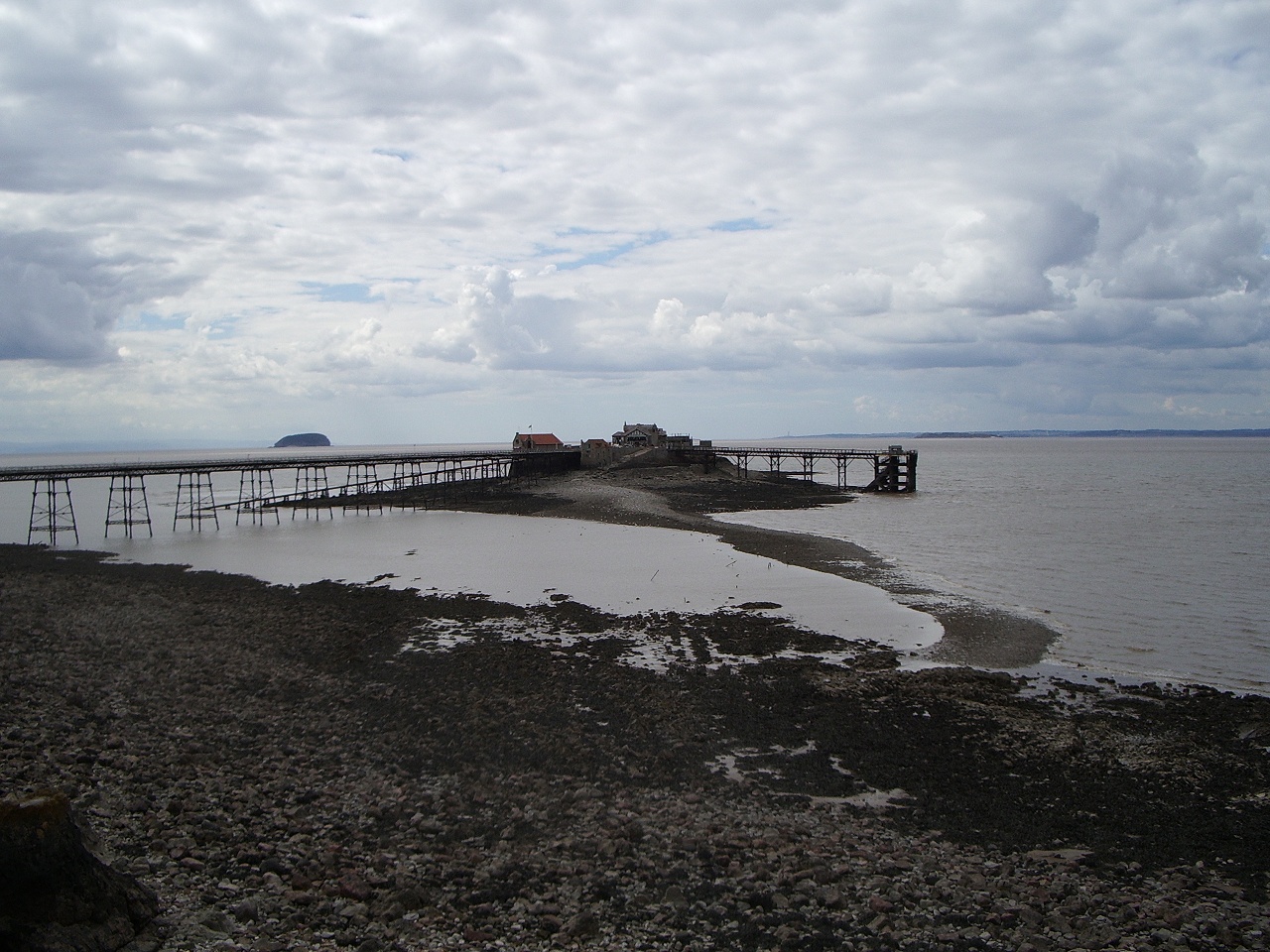
You have to get up pretty early in the morning to catch the tide out. So do that.
Out on the ridge, the water was close enough to stretch out a leg and paddle in (but far too dirty to want to try). Secure in the knowledge that I'd got my research right this time and it posed no threat, I strolled past. Though a much sunnier and warmer day than the Friday, a bitter wind still scoured the coastline past the protective headland at Knightstone Island that shelters the Weston bay, and the foreboding atmosphere at the halfway point was still powerful and chilling. The secret, it turns out, is to look straight down at the ground. If you keep your eyes fixed at all times on the five yards in front of your feet, not only does it help you keep your balance, but not looking at the scary sights at either end of the journey keeps your mind off your precarious location and all its attendant perils, and in a few minutes you're there before you know it, looking up in excited anticipation at a long-dreamed-of goal. At exactly 2.47pm I texted my chum John from the foot of the slipway:
"Live from Scooby Doo Island!"
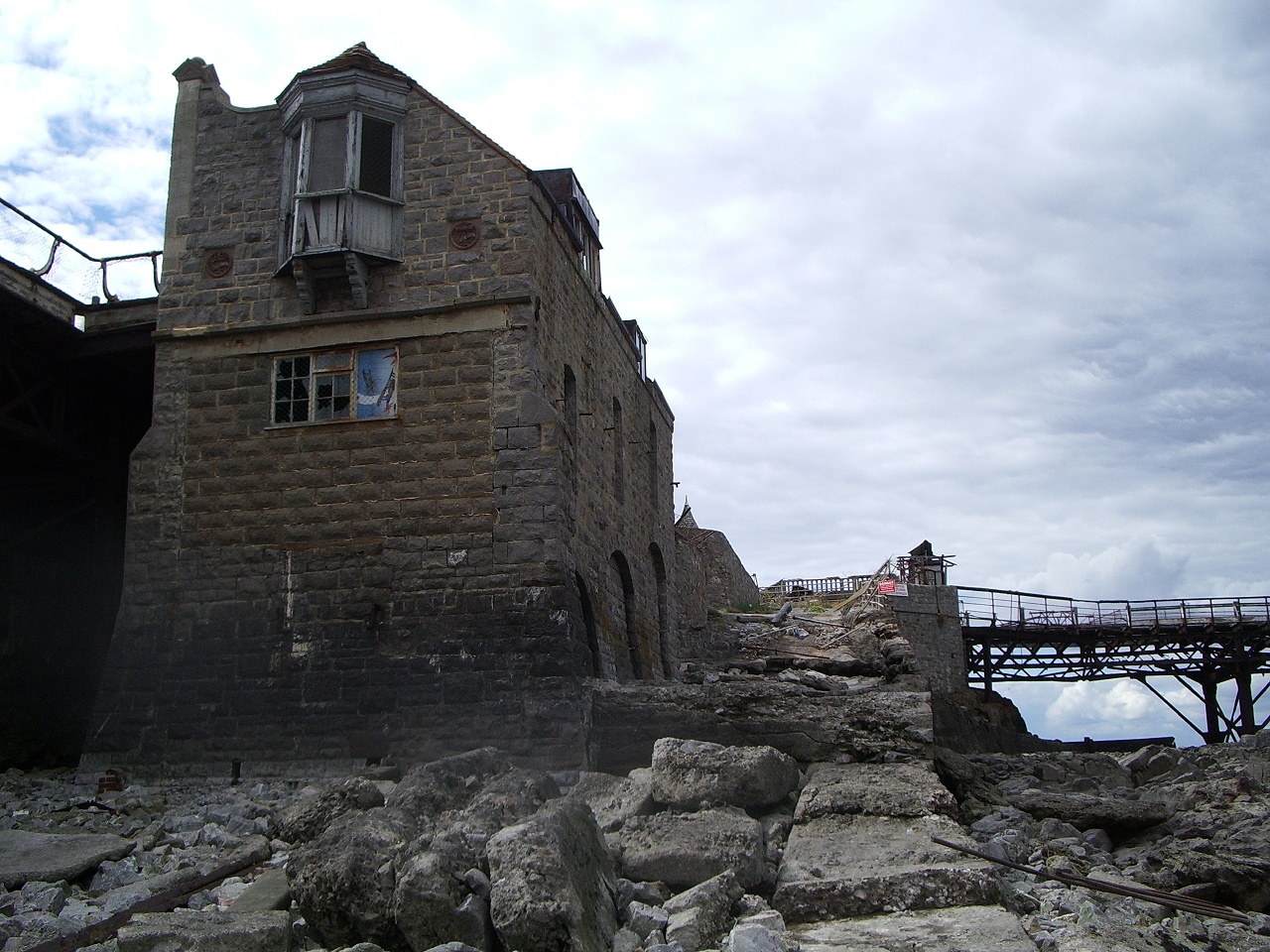
No turning back now.
The slipway is a tangled assault-course of crumbling tarmac, collapsed fences and dire warning signs. Scrabbling your way carefully up it, stopping for a look back at the view and scaling the convenient low wall beside the razor-wired gate takes a minute or two, and then you're finally there for real. It's time to visit the promised land.
As if to set the appropriate atmosphere, the first thing that happened was thoroughly spooky. I reached the gate at the top of the ramp at 2.50pm, and looked up to take a snap of the distinctive clocktower that's the focal point of the island's remaining structures. Only one of the four sides of the tower, the one you can see from the gate, still has a clock face in it. The clock is (and has been for many years) unsurprisingly stopped. Stopped, to be specific, at exactly 2.50pm. It's as if the lonely island had been waiting for the return visit all these years too, and offered up the only sign of welcome it could provide. Brrr.
The first impression you get is that you've stumbled into a scrapyard. Enormous heaps of junk and debris are piled up at the top of the slipway, and the nearest building is shrouded in rusted brown razorwire. Hopping over the wall and taking a look inside the door, you encounter one of the first of many great sights the island has in store - a two-storey room, with the lower floor completely missing, and the upper floor still proudly holding a fairly intact-looking upright piano. It's an excellent early reward for your efforts, but now it's time to turn round, pick your way past the giant piles of rubble, and start exploring in earnest.
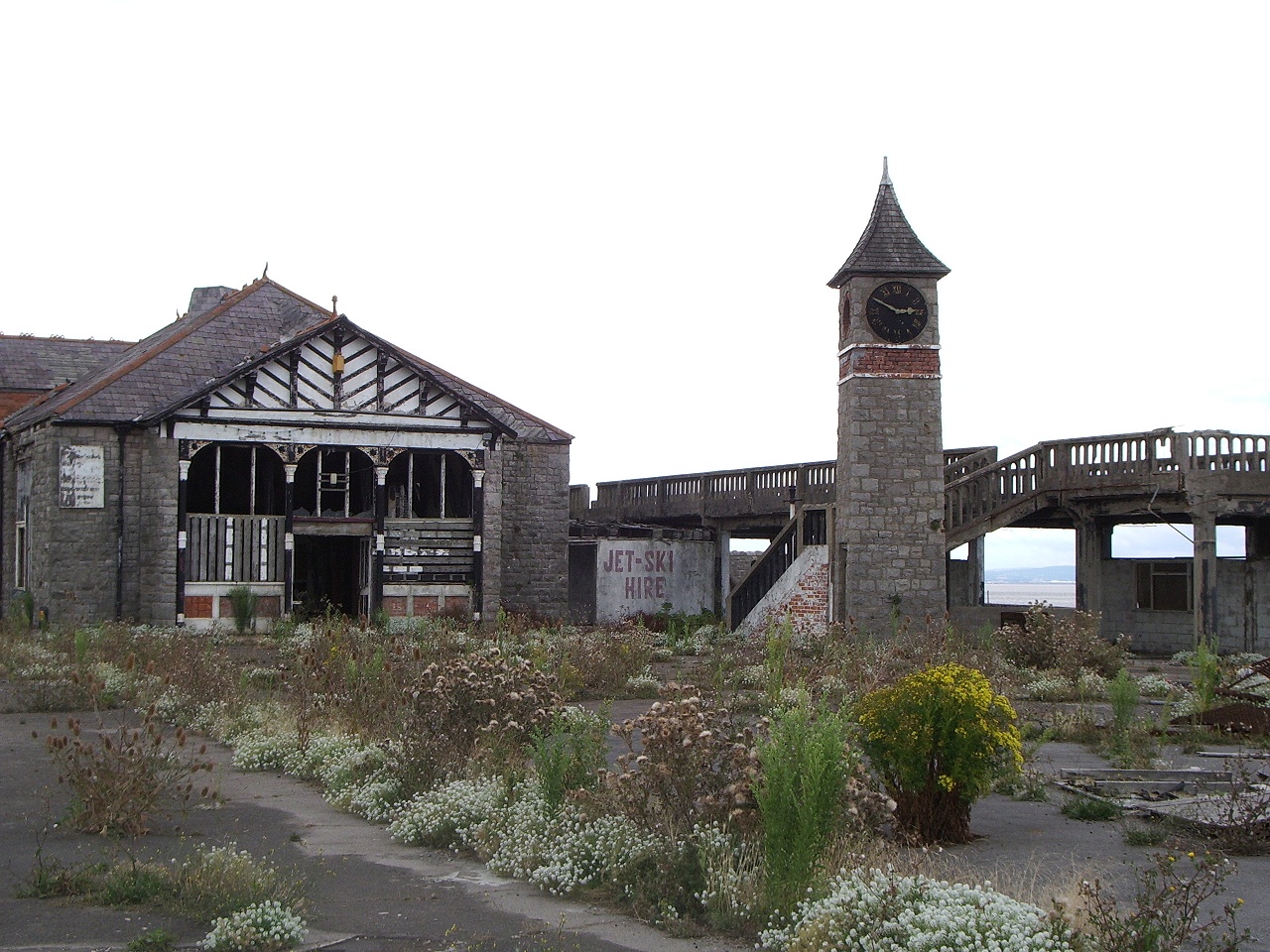
Sadly, there were no sinister ravens roosting in the empty clockfaces this time.
The first clear view of the pleasure pier takes in the clocktower and the main pavilion. The pier was finally officially closed down as recently as 1994, but most of it's been neglected for much longer than that. (The last paddle steamer, which the pier was originally built to receive trippers from, disembarked its passengers onto the north jetty in 1979, twelve years after the pier celebrated its centenary.) The buildings seem to have been abandoned in an air-raid hurry, and odd, poignant remnants can still be seen, like the torn purple-and-gold velvet curtain fluttering in the window frame beside an old ice cream kiosk.
Of greater surprise are the more substantial items left behind - you'd think that either whoever owned them would have had some kind of use for the splendid buggy whose rusting frame adjoins the turnstiles leading to the jetty and the magnificent organ found by a window of the main hall, or that some enterprising thief would have swiped them for salvage long before now. But still they stand, as if waiting
patiently and faithfully to serve their purpose again.

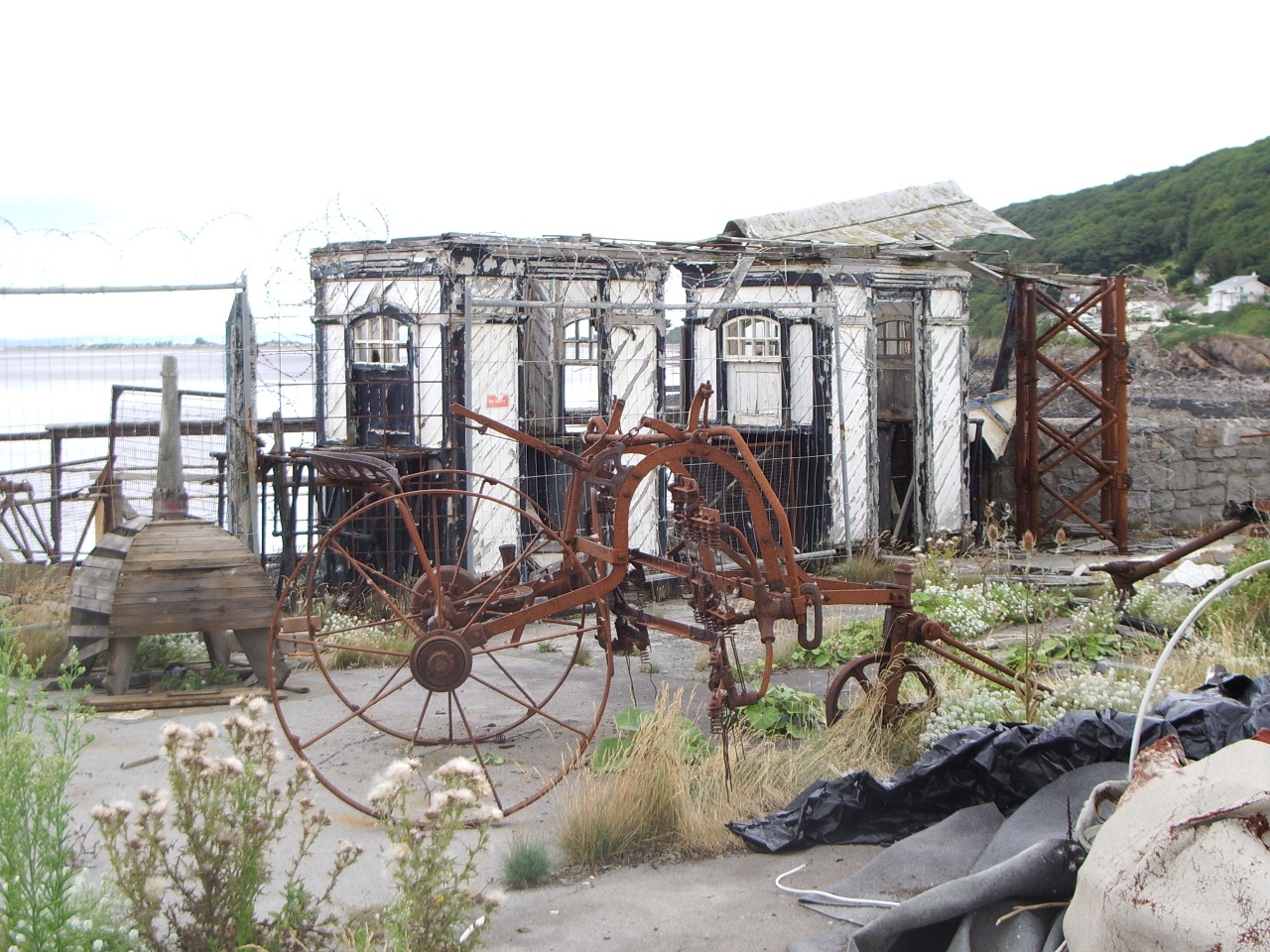

Stills from a rag-and-bone man's dreams.
The pier has had a troubled history, and its hard-knock life is depicted unequivocally by its spectacularly dilapidated condition. Birnbeck's geographical location is far more exposed than the newer Grand Pier in the middle of town, and even when it was in business it was susceptible to being battered by brutal storms, which wrecked even the pier's sturdy structures on more than one occasion. (The current north jetty, which looks to be one serious gale away from keeling over entirely, is the third to occupy its ill-starred position.)
The buildings have also been ravaged by fire (practically the entire pier was burnt down on Boxing Day of 1897), and of course have subsequently had to cope with decades of neglect and abandonment to the climate's worst excesses. Even this intrepid reporter wasn't stupid enough to venture inside any of the creaking, part-collapsed buildings, but just standing in the doorways provides plenty of wonderful views, and it doesn't take much imagination to fill out the scenes that they must once have played elegant host to.
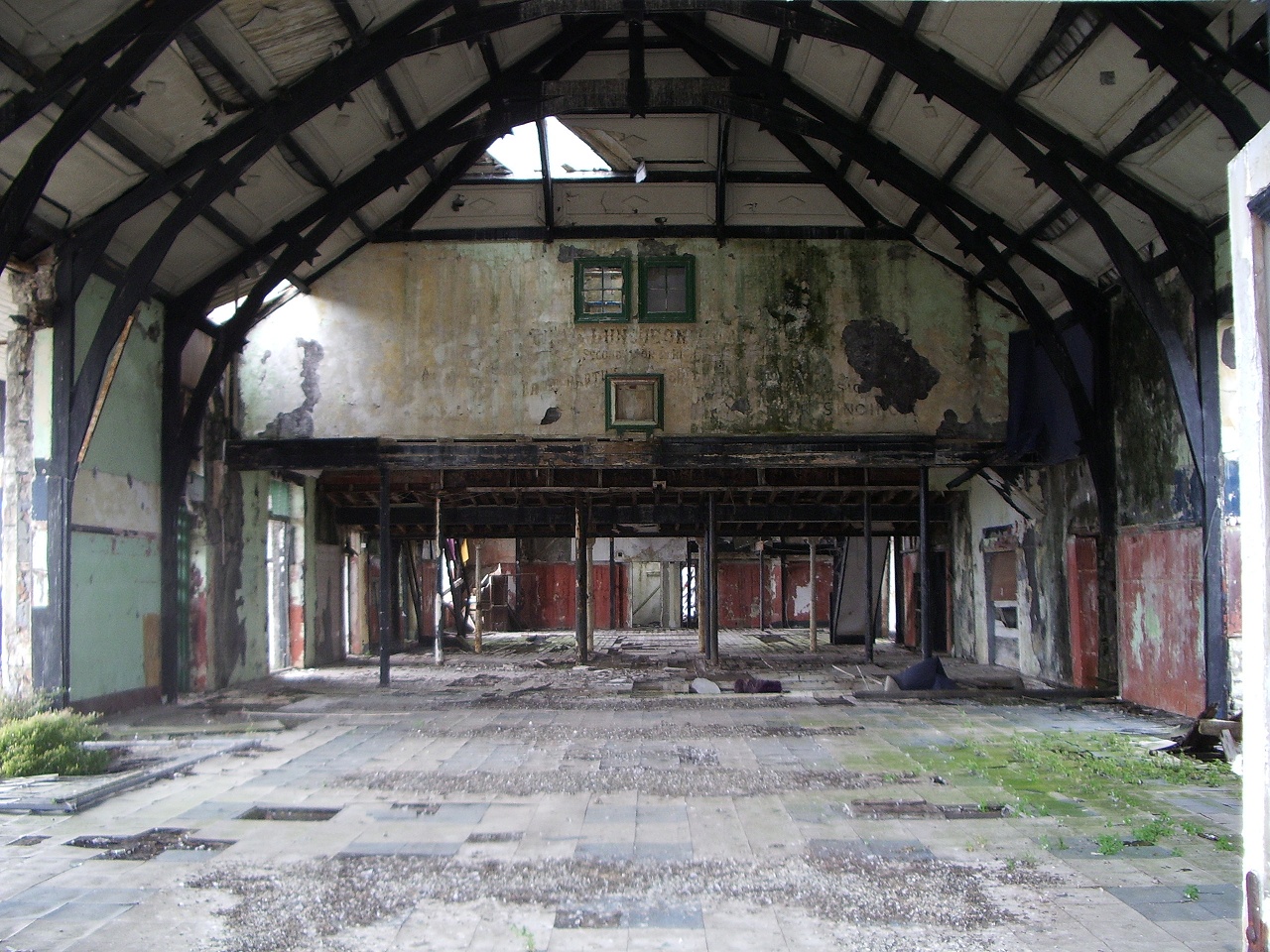


These shots are all of the main pavilion from various entrances.
Above all else, and as you might imagine, Scooby Doo Island is an eerie place. You feel slightly edgy the whole time you're there, a sort of heightened nervous excitement that makes you leap out of your skin when a rabbit (at least, I think it was a rabbit. Man, I hope it was just a rabbit) suddenly makes a dash for cover from its unexpected company. You're aware not only that you shouldn't be there, but that any part of the structure could give way above or underneath you at any moment, and also of the ticking clock of the tide.
Throw in a sunny but cloudy day prone to suddenly plunging into dramatic overcast gloom, the chill wind whistling through the ruins and the shrieks and caws of occasional gulls and crows, and you have a recipe for spookiness that the Mystery Machine team would feel right at home in. You're torn by wanting to savour the atmosphere for as long as possible and take photographs of every last corner, and the powerful urge to get the job over and done with and be out of there in one piece before you push your luck too far. But ultimately the island is the stronger force. The colours alone are so striking you can hardly tear your eyes away, and it's just the right kind of spookiness, like being a little kid on a ghost train.
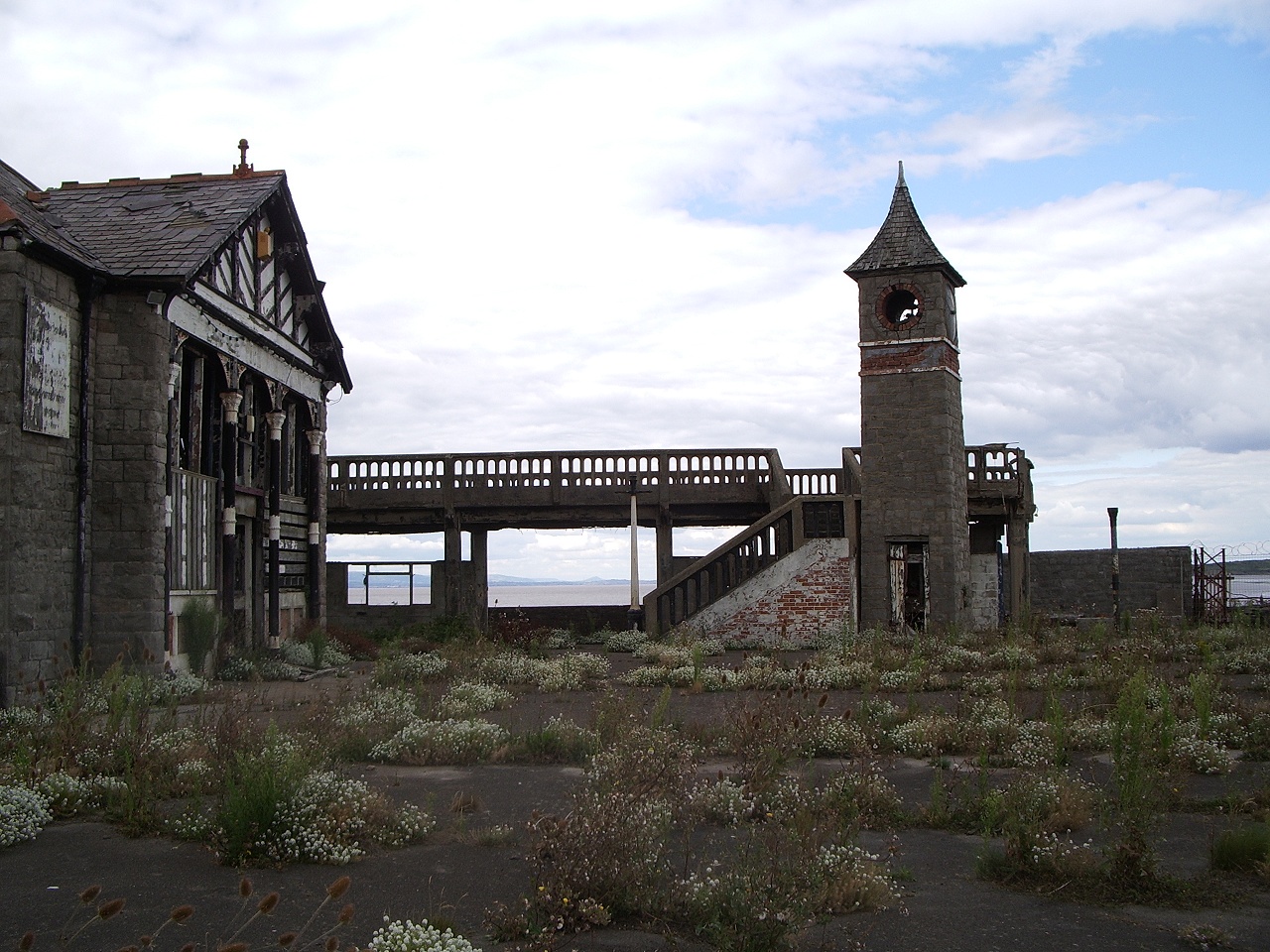
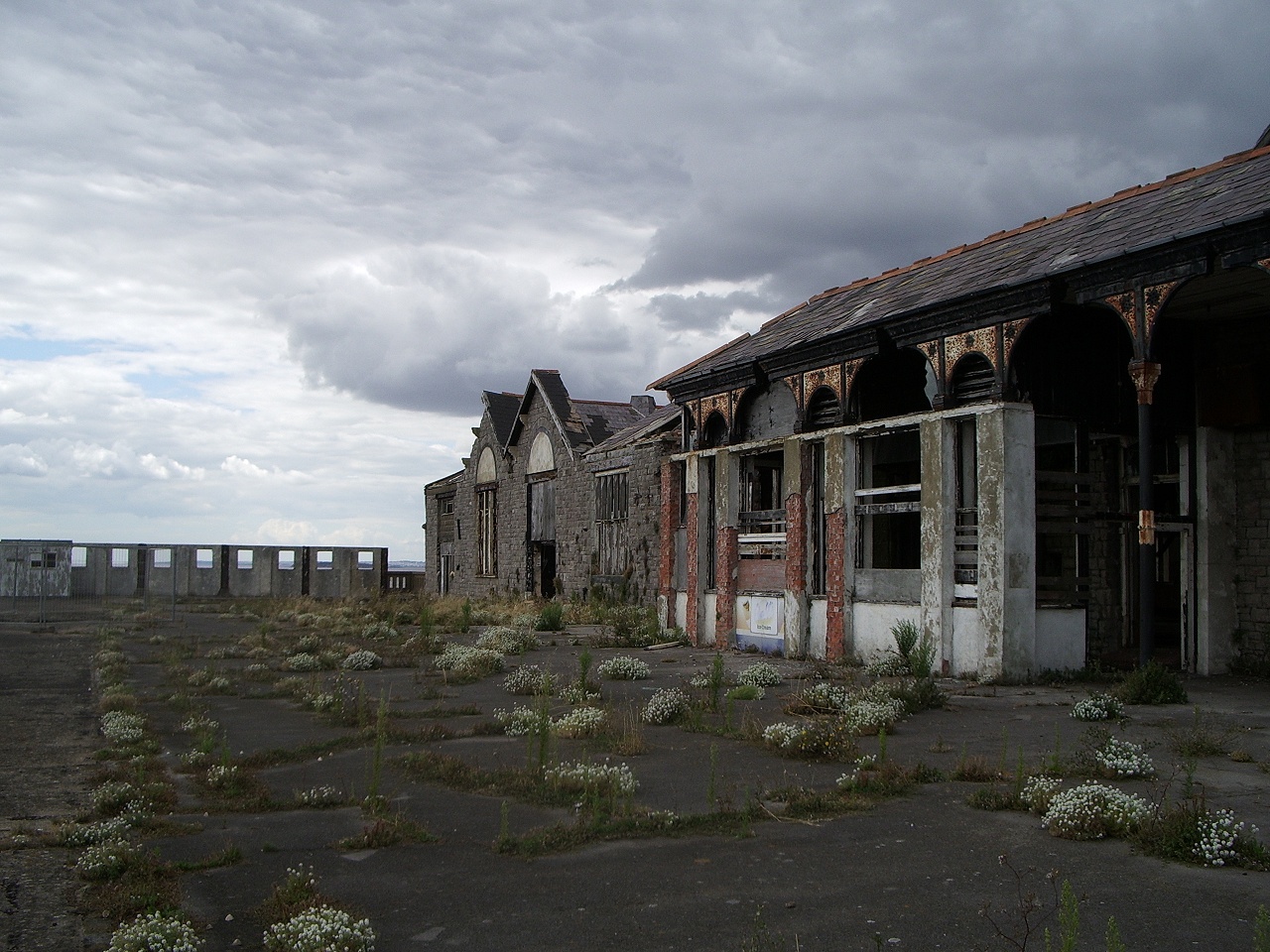

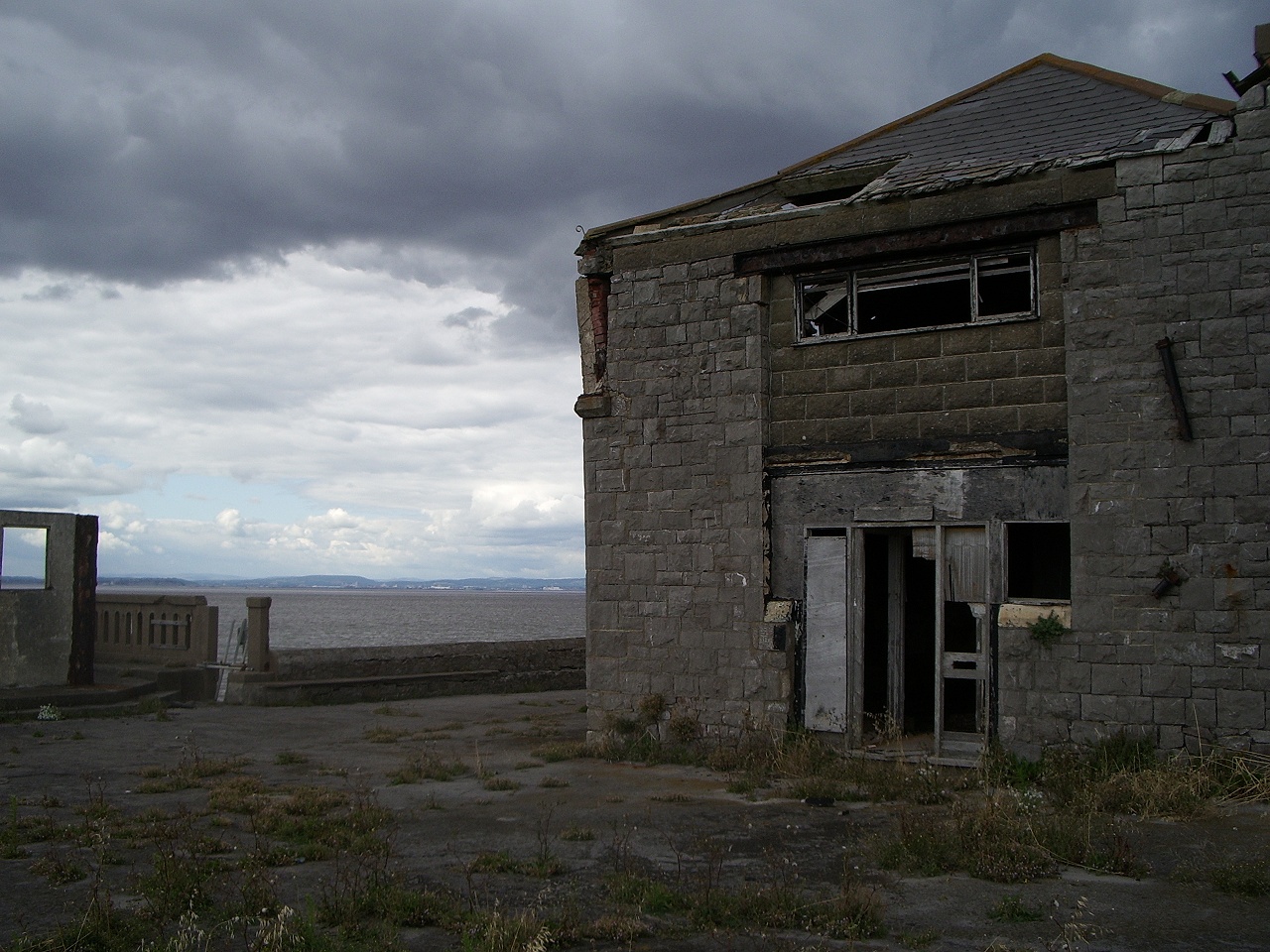
Scared yet?
So you linger and you click and you try to capture every angle and detail so you don't forget, because you might never get to come back here again. One more big storm (or more likely, one more rich-yuppie housing development), and maybe nobody will. One way or another, this place is living on borrowed time, and when you're a visitor there, so are you. Eventually, then, it has to end, and after a final look around it's time to say goodbye.
10 minutes later you're back on the grassy bank of the cliffs, with still a few minutes to go before the lowest point of the tide. If you'd dropped your wallet by the clocktower, say, there'd be plenty of time to go back over and get it. But
there's no more to see.
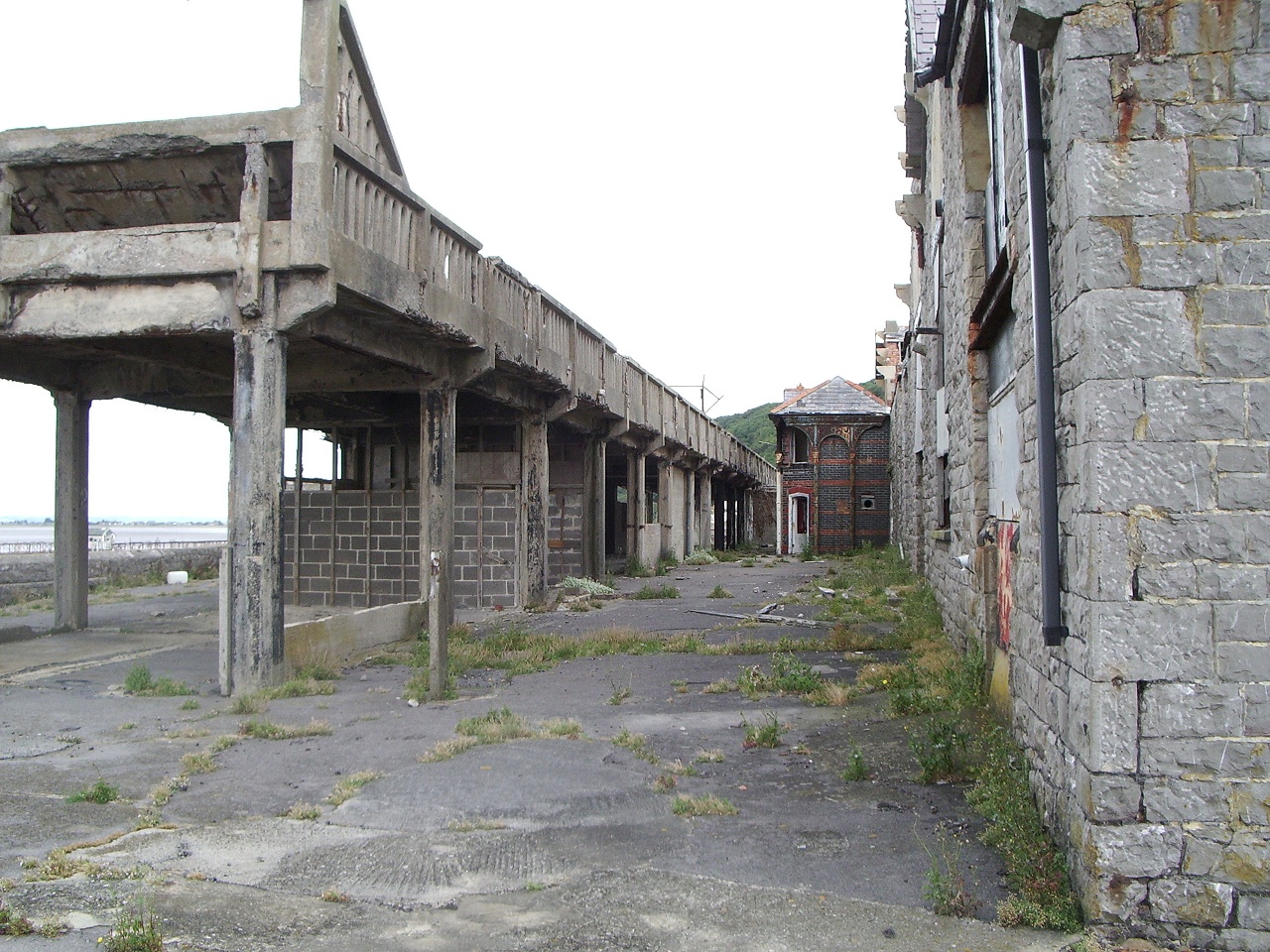

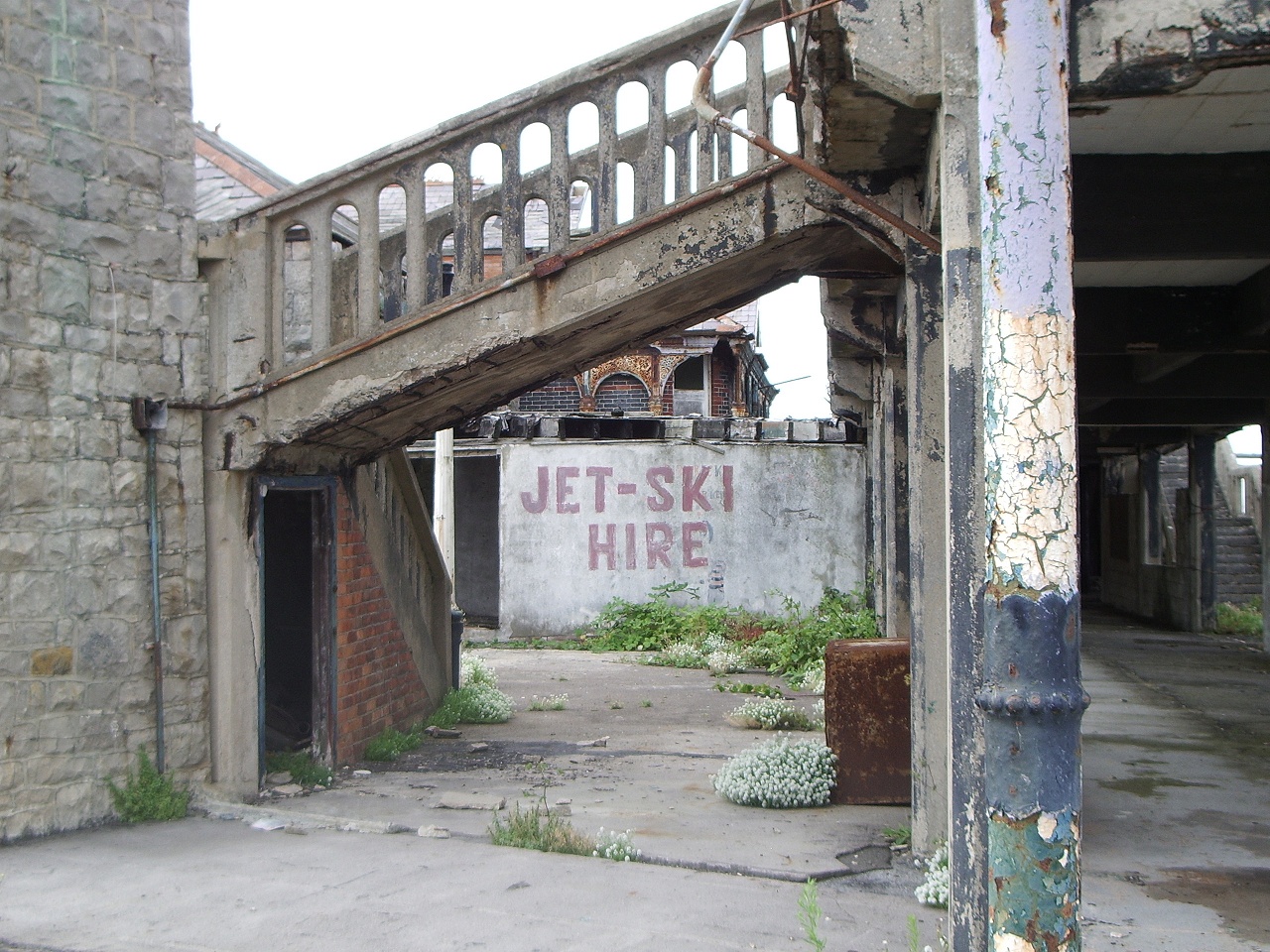



A '99' with raspberry sauce, please. HELLO?
It seems to be occasionally (and fairly arbitrarily) possible to be allowed to visit Birnbeck Pier. Your reporter, indeed, had actually attempted to gain some "legitimate" access on the Friday after chickening out of the SAS method - calling the head of the lifeboat crew (after getting his number from the nice helpful people at the RNLI shop on the front) and asking very nicely if he could tag along with a lifeboatman for a quick five minutes' snapping - but got a flat refusal. (To be fair, it may not have helped that I was calling from a mobile on the promenade, and having to yell wildly to be heard over a howling gale down a bad line.)
WoS recommends that you at least give it a try. As long as you stay out of the buildings and don't poke around in the rubble, I don't see how you could come to any serious harm on the island. But in today's litigation-lovin', health-and-safety nanny state it may be hard to persuade the relevant authorities that you're a reasonably sensible, intelligent adult (if, indeed, you are one), and the hardcore trespassing option is only going to get more irresponsible and foolhardy as time goes on - goodness knows how much more fragile everything will be by next low tide after another year of battering from the weather. I went there, then, so that you wouldn't have to. But Scooby Doo Island deserves to be experienced by a few more people before the yuppies get their hands on it forever.
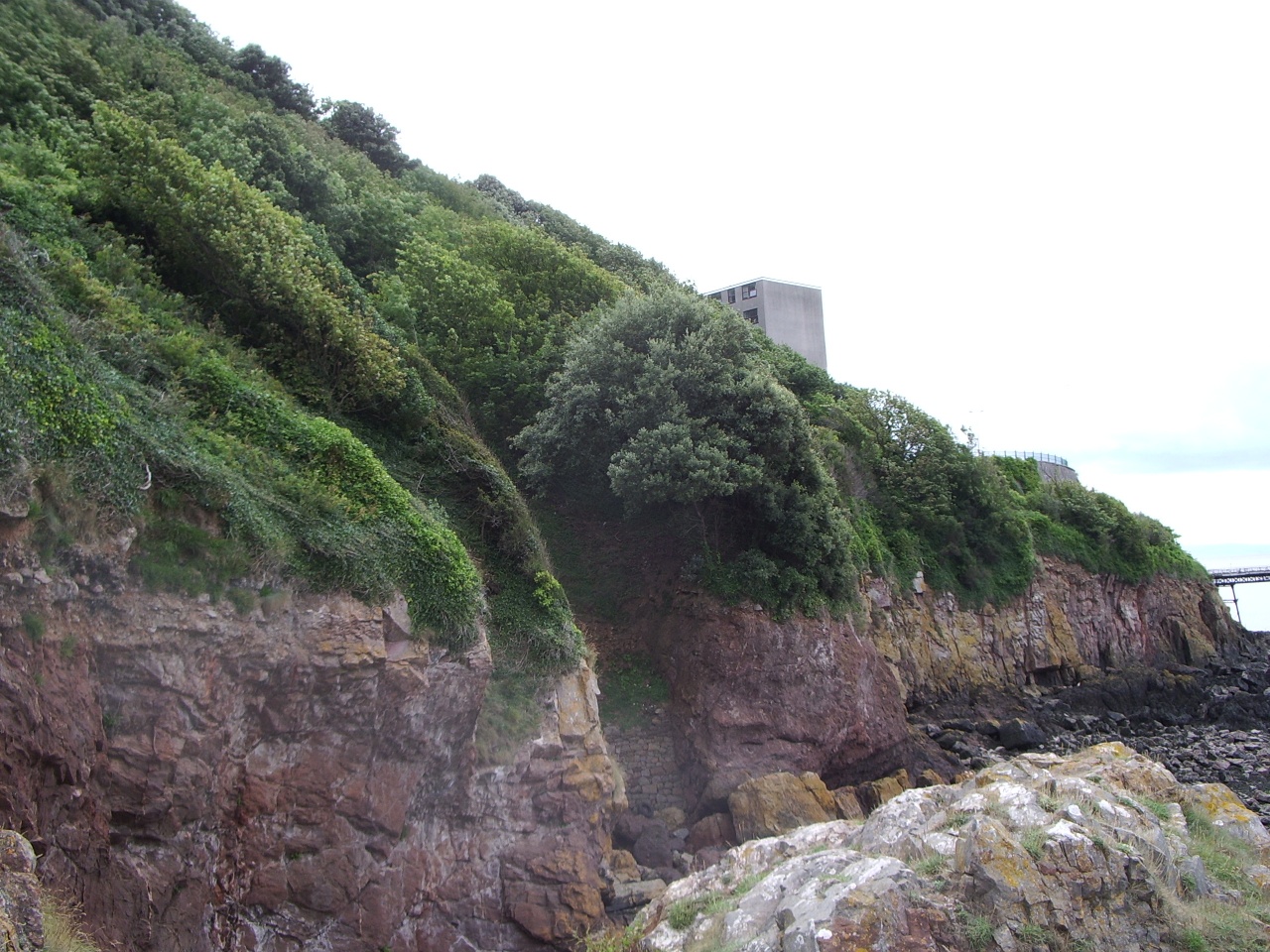 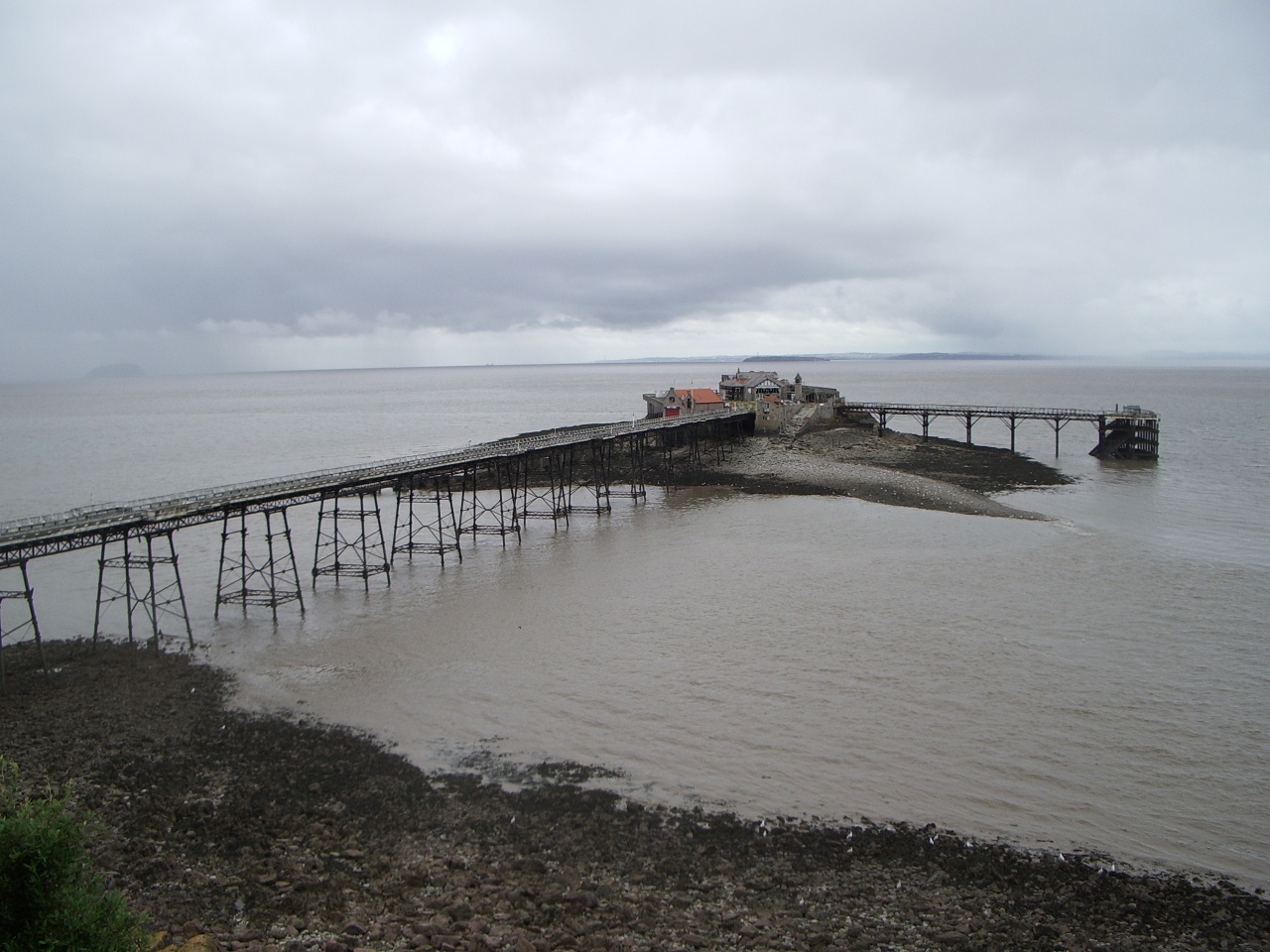  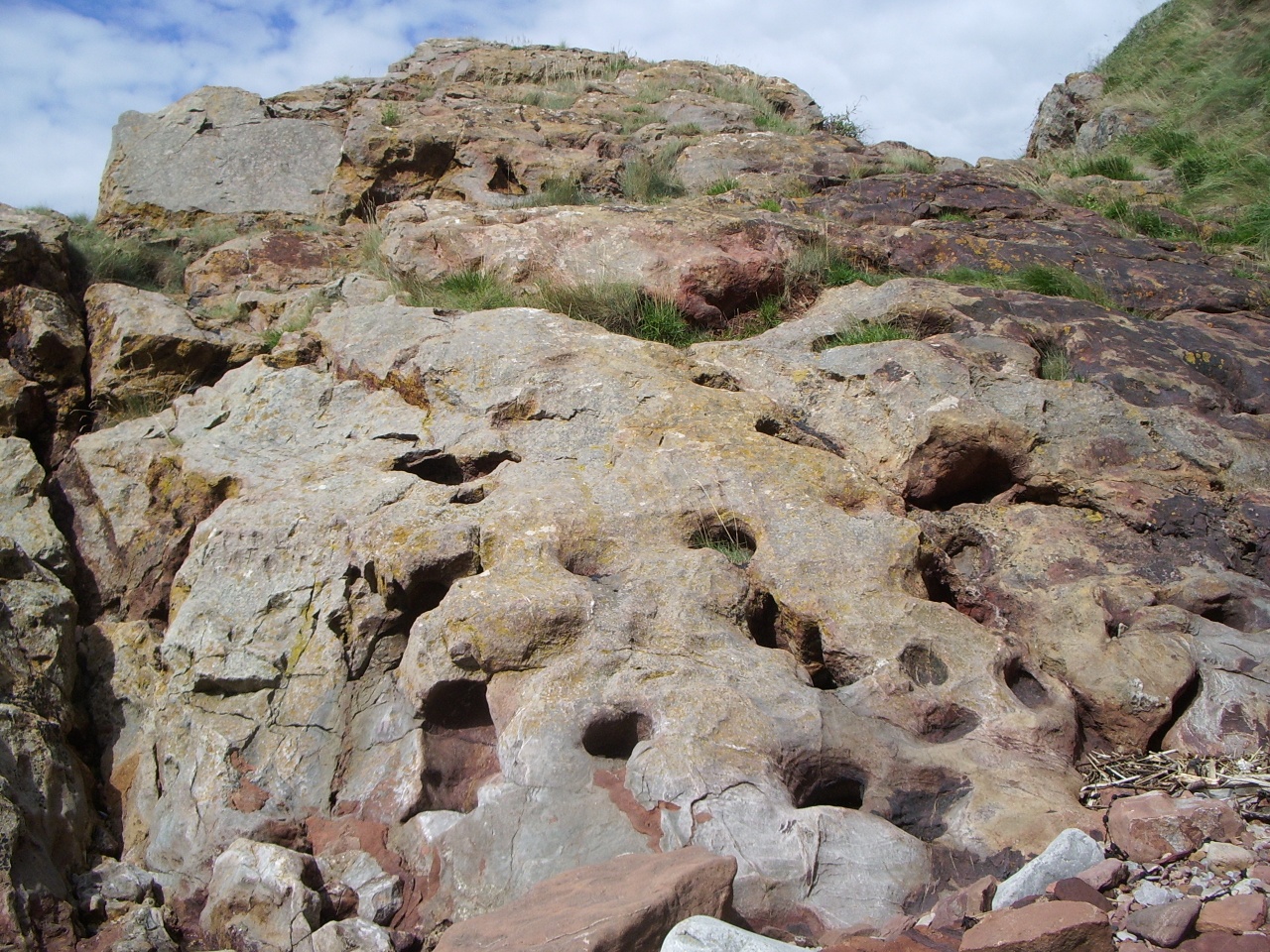 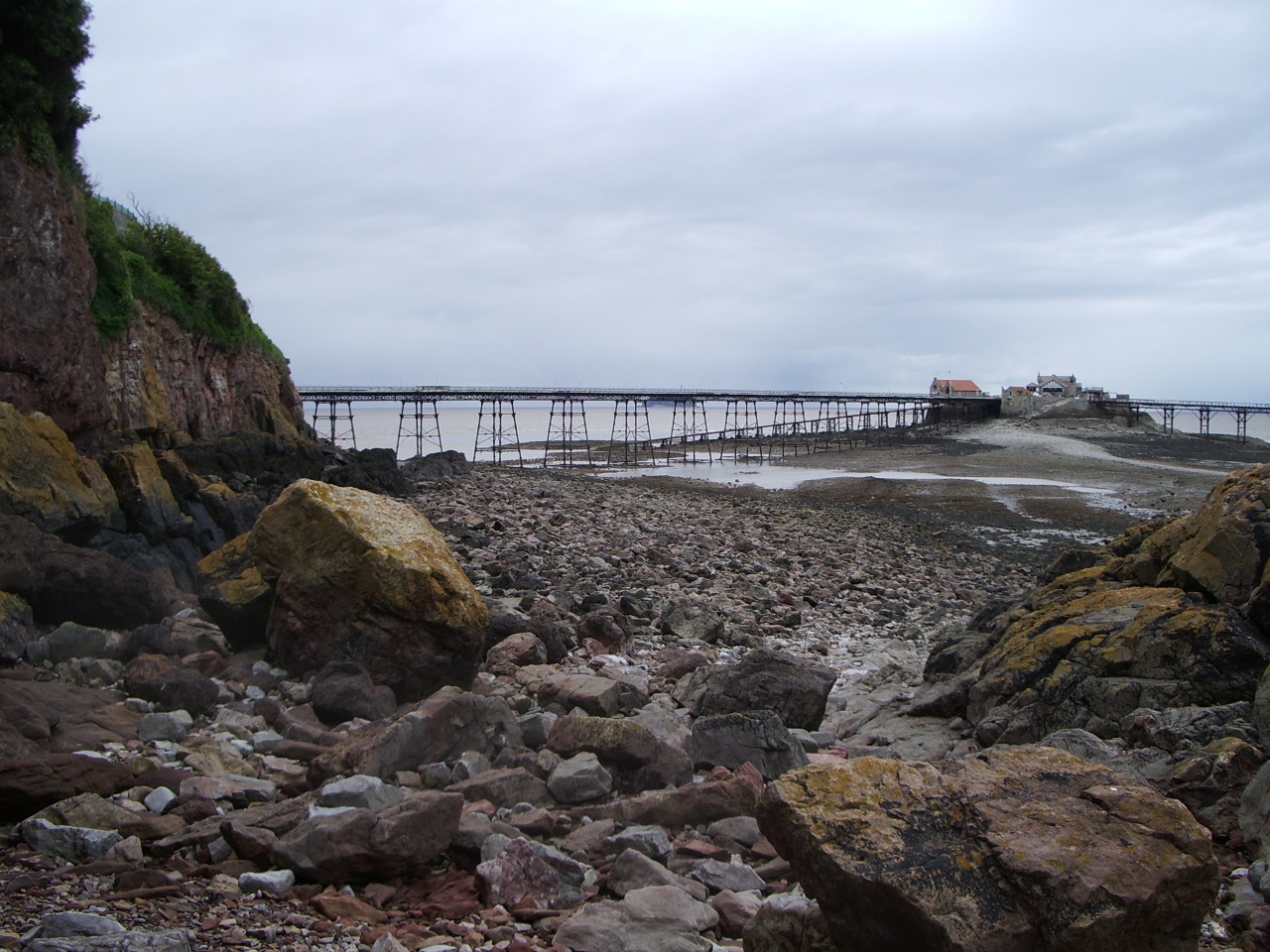    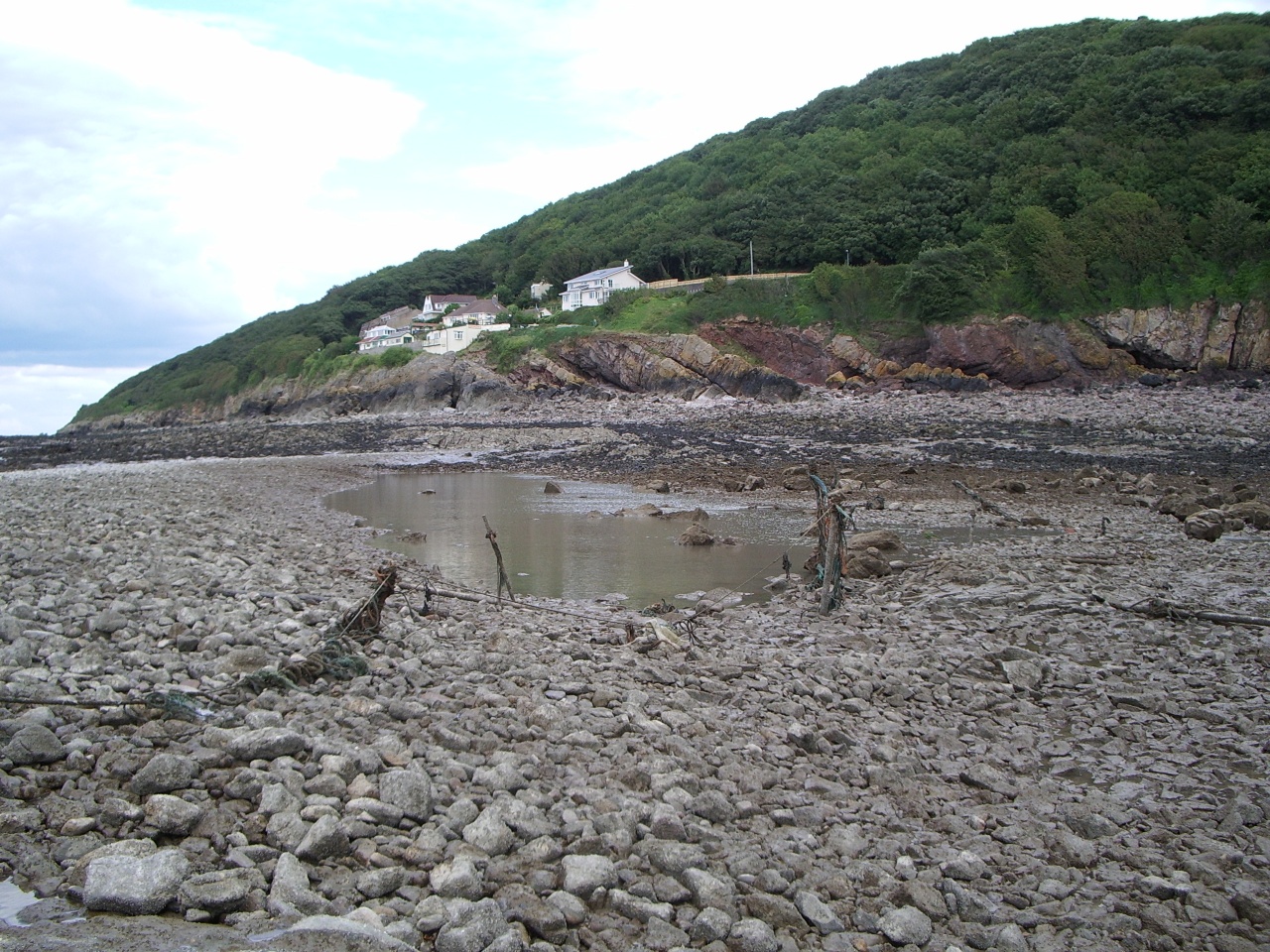   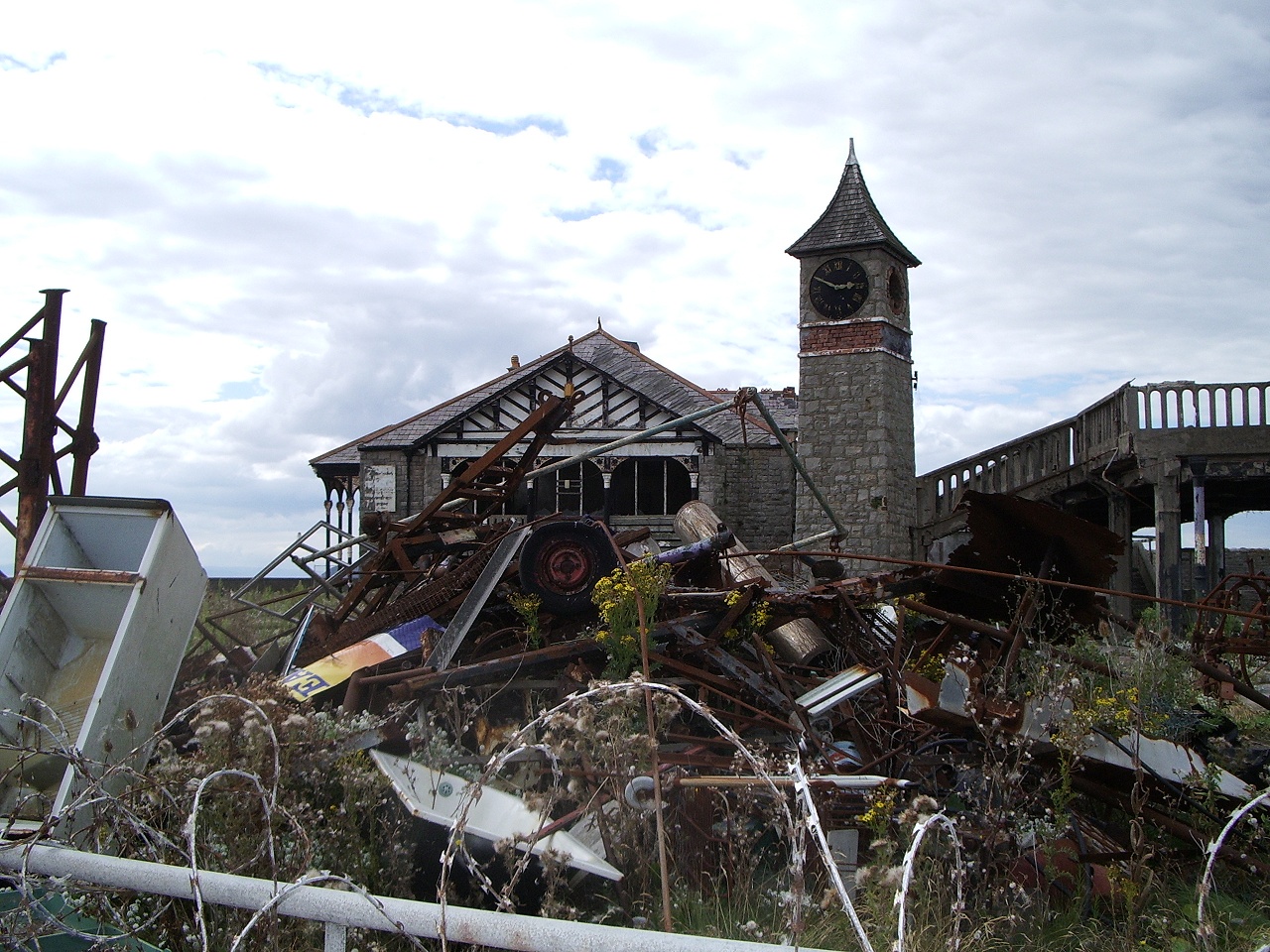 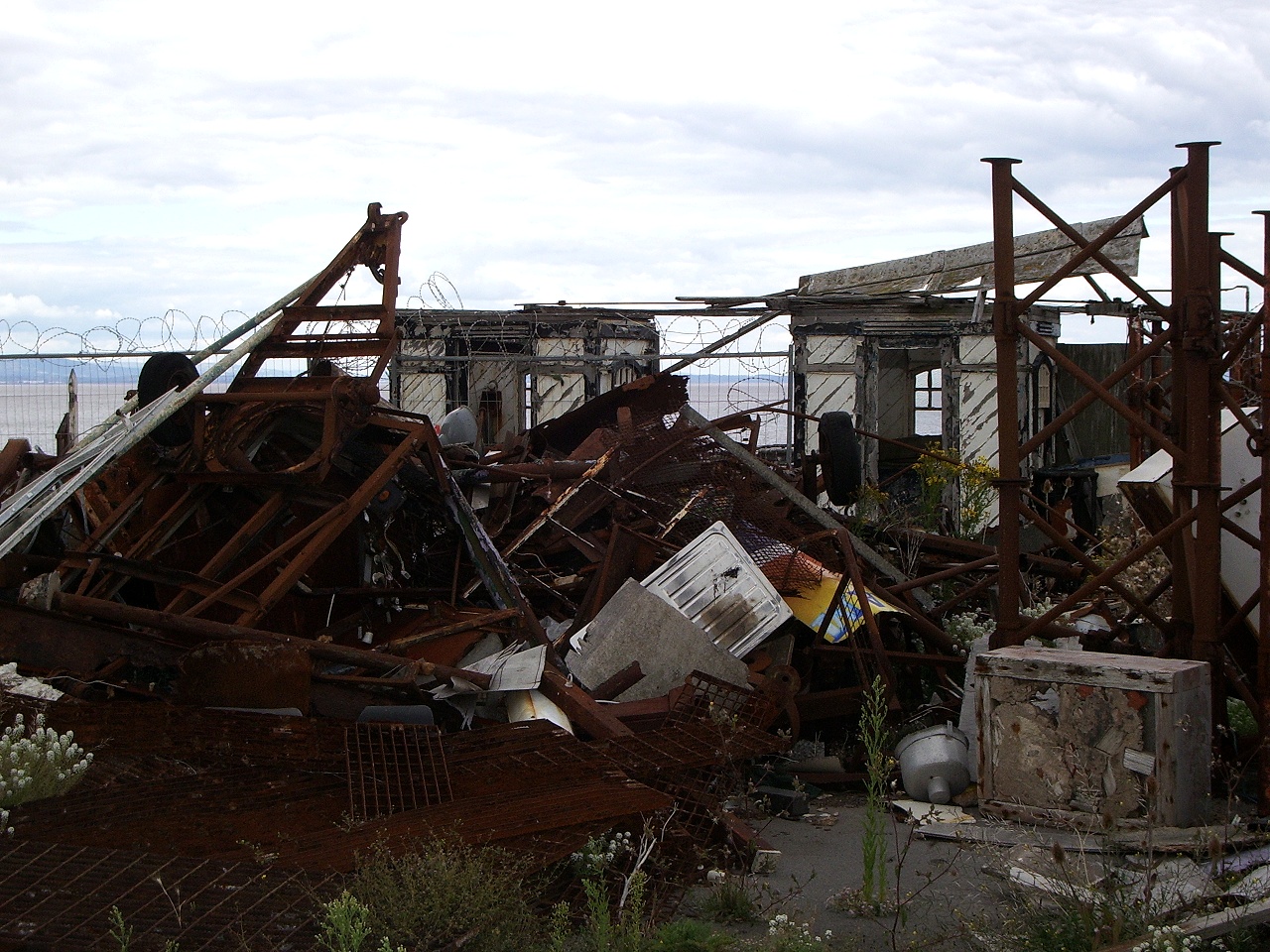 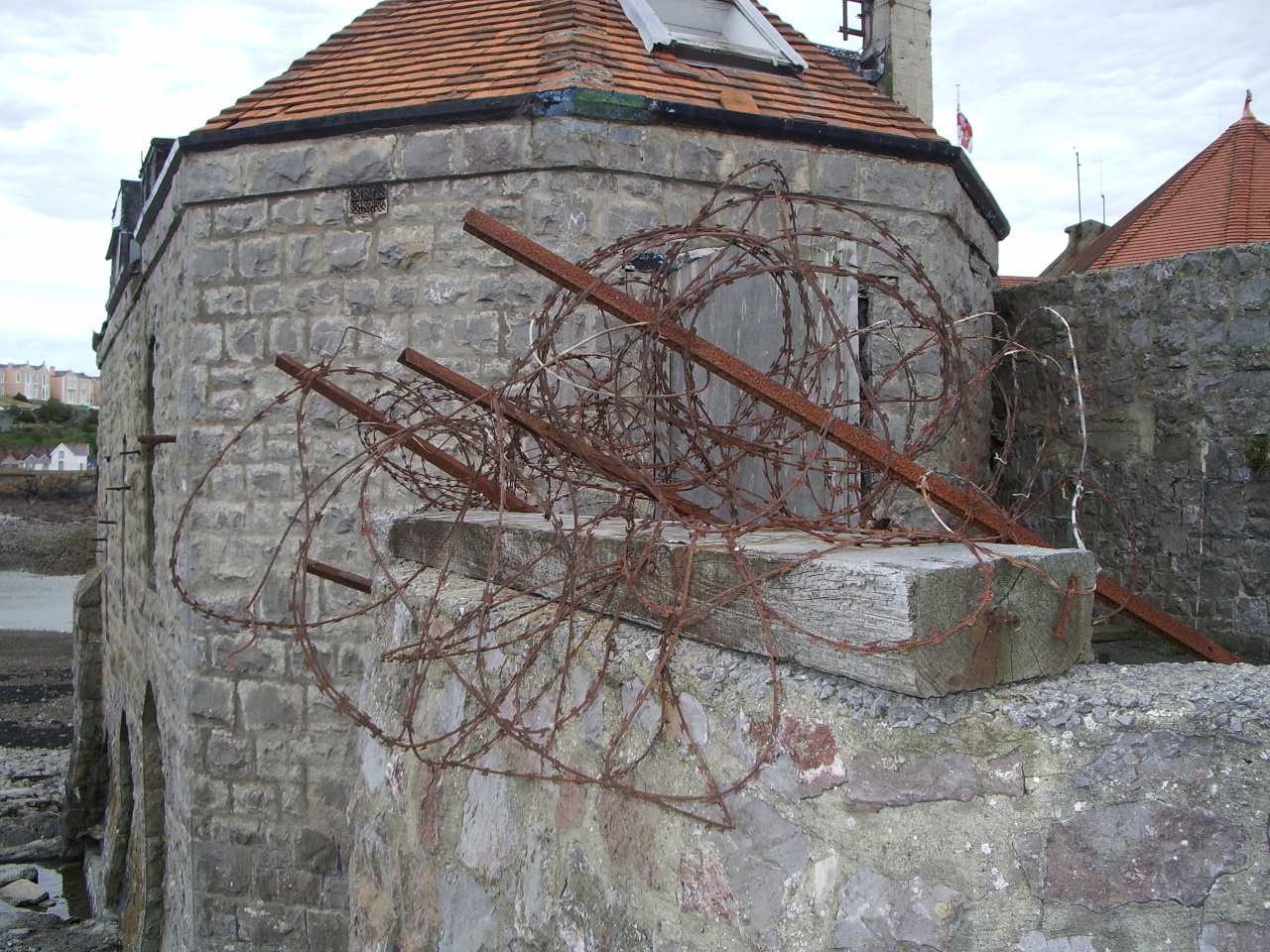    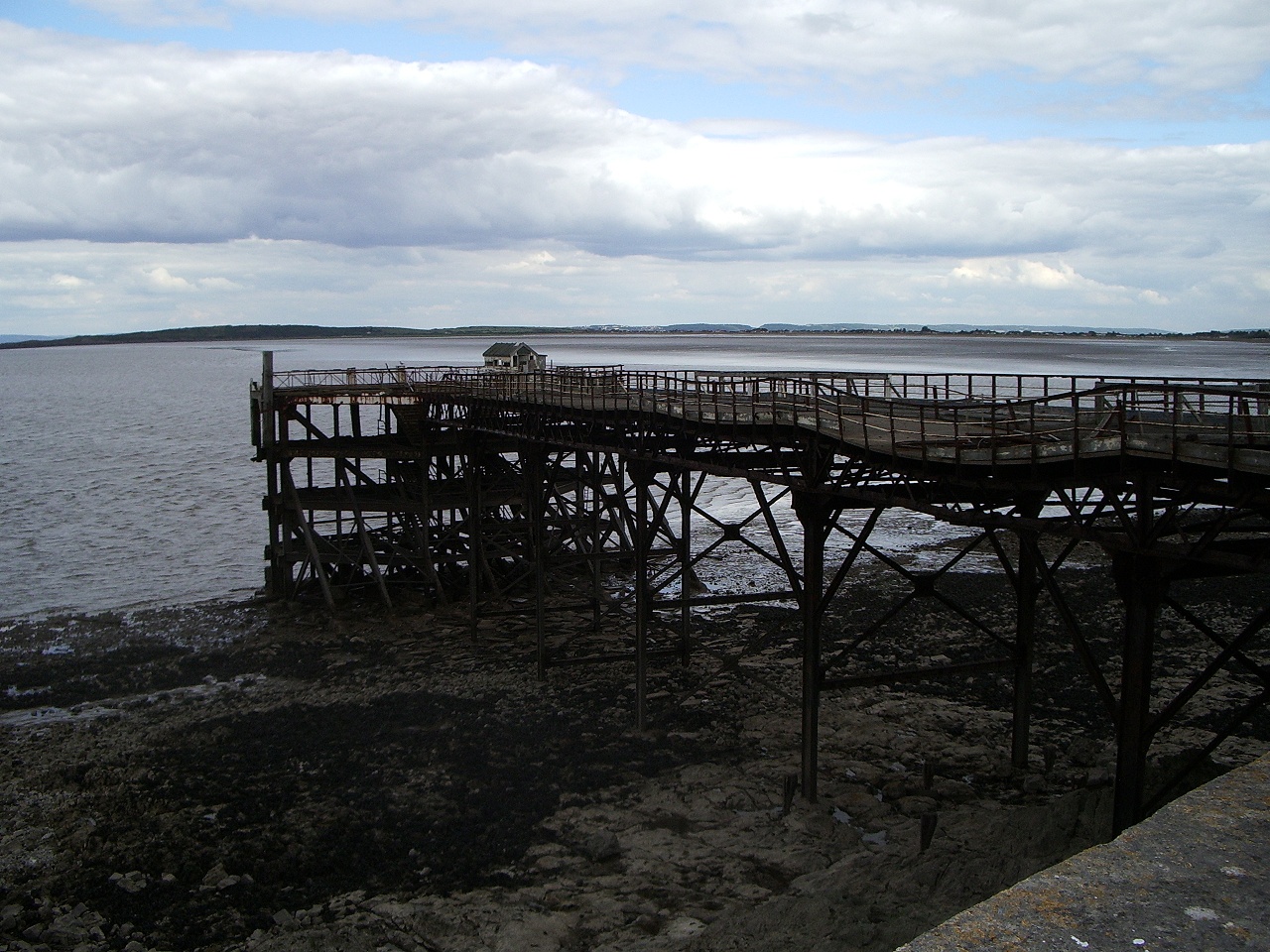 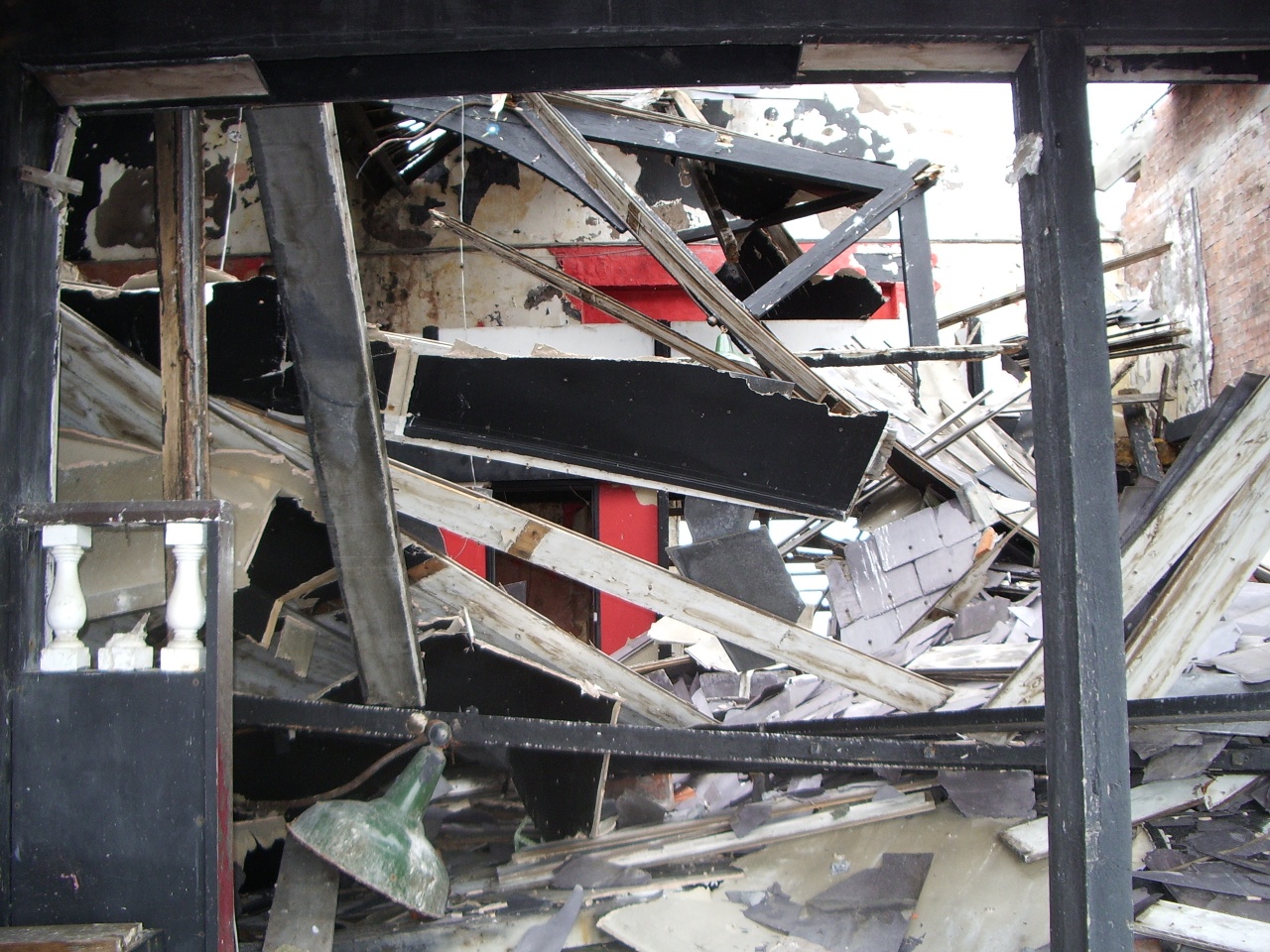     |

